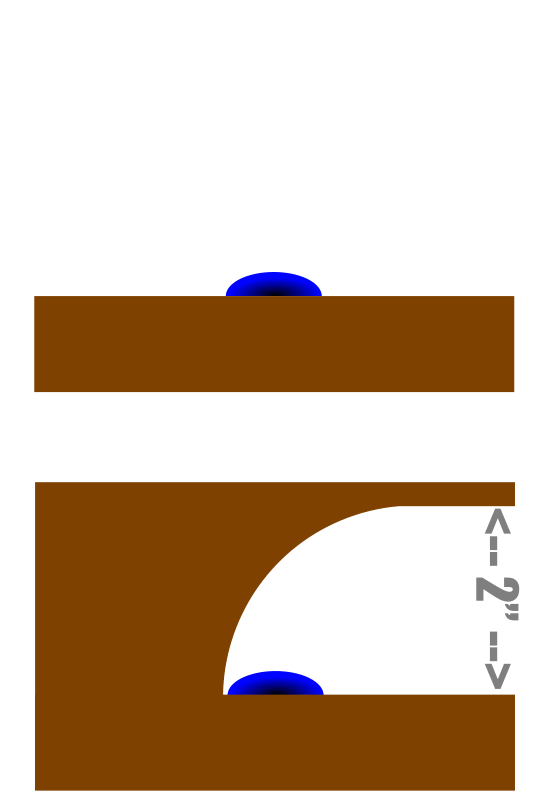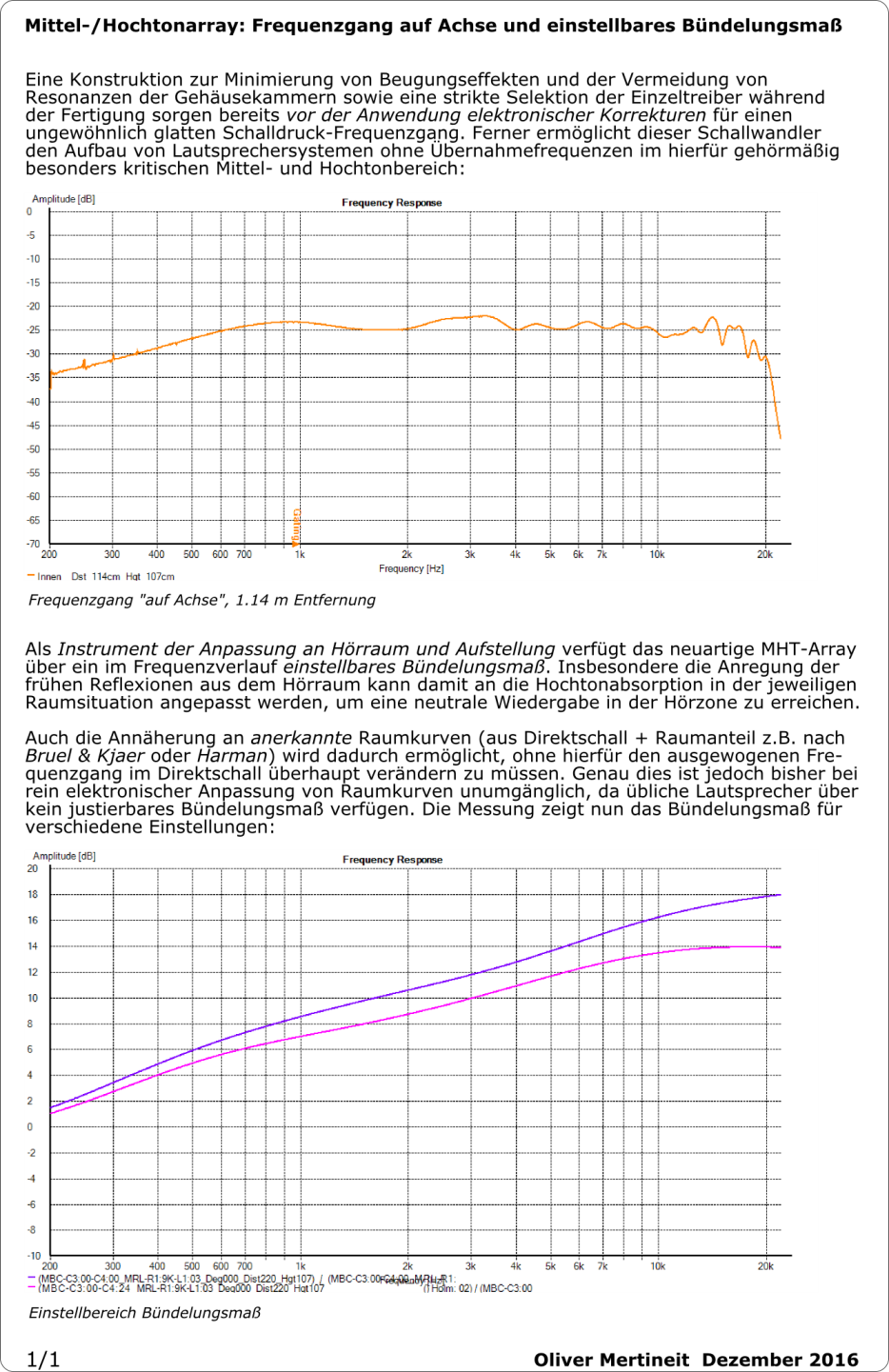Regarding "Beolab 5"
If figures/diagrams 5 and 6 here (scroll a bit ...)
Moulton Laboratories :: A new loudspeaker design
are correct, then this speaker "does not obey the rules" when it comes to "overall" directivity and power response.
This is IMO a speaker, which has a hard time (needs "good luck" with the listening room ) to come anywhere close to "regarded room curves" like e.g. published by Bruel&Kjaer or Harman.
If figures/diagrams 5 and 6 here (scroll a bit ...)
Moulton Laboratories :: A new loudspeaker design
are correct, then this speaker "does not obey the rules" when it comes to "overall" directivity and power response.
This is IMO a speaker, which has a hard time (needs "good luck" with the listening room ) to come anywhere close to "regarded room curves" like e.g. published by Bruel&Kjaer or Harman.
Last edited:
(btw.)
I have never seen or measured something even close to "true omni" in commercial HiFi speakers.
"true omni" understood as the spherical pattern is unnecessary, even undesired
by "regular omni" I mean 360 degrees constant laterally
hemispherical is even better but only if the speaker is up-firing (not neccesarily floor-coupled
the problem of Beolab 5's being improperly set up in B&O own showrooms.
So that is not a bad demo situation at all. Chances are big that they will also be set up in an improper fashion in the average B&O customer's own listening environment.
Regards
Charles
So that is not a bad demo situation at all. Chances are big that they will also be set up in an improper fashion in the average B&O customer's own listening environment.
who wouldn't care anyway
but we're not "average B&O customer's" here, right?
one chooses the long wall or the short wall and put them in proxemity of a b&o tv, its not rocket science. they even have automatic room correction!
audiophiles are quick to point out poor demo`s, but few have heared the music played before and have not been in the room either. how long were they there?
if an audiophile stranger came to your house to evaluate your system, his description would probably vary alot from your own..
most who buy these speakers dont go to stores and listen to demo`s. they know its a good speaker and order them..
if you are a serious client im pretty sure B&O would fix you up with a demo in your own home, atleast if you live in a central location.
audiophiles are quick to point out poor demo`s, but few have heared the music played before and have not been in the room either. how long were they there?
if an audiophile stranger came to your house to evaluate your system, his description would probably vary alot from your own..
most who buy these speakers dont go to stores and listen to demo`s. they know its a good speaker and order them..
if you are a serious client im pretty sure B&O would fix you up with a demo in your own home, atleast if you live in a central location.
the old one wasn't the flagship Beolab 5 in the same room?
OTOH the disappointing sound could be as well attributed to the problem brought up by bcodemz above.
Because many people reported through the years, on diyaudio as well, the problem of Beolab 5's being improperly set up in B&O own showrooms.
The problem I heard was just plain ol' higher order modes.
From owning Gedlee speakers I'm kinda sensitive to them, and the Beolab lens had it in spades.
I guess a ninety degree reflector located two centimeters from a tweeter tends to generate HOMs
It's called *reflection* and then *diffraction* when it sums to the original wave.
No need to bring *HOM* to this kind of argument
I made some illustrations a couple years ago that show how this works:

Higher order modes are wavefronts that don't follow a direct path from the loudspeaker to your ear. When you try and bend sound ninety degrees, you're particularly susceptible to HOMs, because there's a fraction of the wavefront that won't bend perfectly.
Who knows if that fraction is 25% or 75%, what matters is that it's not 0%, and due to that, it creates audible issues.
The problem I heard was just plain ol' higher order modes.
From owning Gedlee speakers I'm kinda sensitive to them, and the Beolab lens had it in spades.
I guess a ninety degree reflector located two centimeters from a tweeter tends to generate HOMs
Ah, I see and I understand, call it HOMS or diffraction, anyway, as I always say deflectors are diffraction generators, not good
KR's review is now online.
What I found most interesting about the review was his strong preference for narrow directivity over wide. How "narrow" does the Beolab 90 get?
What I found most interesting about the review was his strong preference for narrow directivity over wide. How "narrow" does the Beolab 90 get?
@Pallas: On Page 15 of the B&O whitepaper you will find some horizontal polar plots at least:
https://www.google.de/url?sa=t&rct=...01.pdf&usg=AFQjCNFI5Y0jbBGYmooZnp9lKMFvwiCJWg
However the room curves found in KR's listening room
(Stereophile Test "Measurements" Fig. 4 http://www.stereophile.com/content/...-loudspeaker-measurements#HMIp6IMDphO6eLDt.97)
may indicate some - relative- rise in energy over frequency above 400Hz in "narrow" and "wide" mode (but not in "omni" mode), which of cause may also be influenced by the room.
However to achieve a strictly falling room curve, like e.g. suggested by "acknowledged" room curves from Bruel&Kjaer or Harman, one would need IMO a "fine adjustable" Directivity Index (DI) in a loudspeaker at least from mid to high frequencies, to acccomodate for different absorption in different listening rooms ...
But that does not seem, what switching of "wide", "narrow" and "omni" modes in Beolab 90 is intended for, as far as i understand ...
In the contrary this "supercardioid like" wideband mid- and highrange unit from 0.4Khz ... 20Khz has an adjustable DI like indicated in "Blatt 1/1" (Page 1/1, 2nd diagram):
http://www.hififorum.at/showthread.php?p=329184#post329184
It is intended for use with a cardioid bass unit ...
https://www.google.de/url?sa=t&rct=...01.pdf&usg=AFQjCNFI5Y0jbBGYmooZnp9lKMFvwiCJWg
However the room curves found in KR's listening room
(Stereophile Test "Measurements" Fig. 4 http://www.stereophile.com/content/...-loudspeaker-measurements#HMIp6IMDphO6eLDt.97)
may indicate some - relative- rise in energy over frequency above 400Hz in "narrow" and "wide" mode (but not in "omni" mode), which of cause may also be influenced by the room.
However to achieve a strictly falling room curve, like e.g. suggested by "acknowledged" room curves from Bruel&Kjaer or Harman, one would need IMO a "fine adjustable" Directivity Index (DI) in a loudspeaker at least from mid to high frequencies, to acccomodate for different absorption in different listening rooms ...
But that does not seem, what switching of "wide", "narrow" and "omni" modes in Beolab 90 is intended for, as far as i understand ...
In the contrary this "supercardioid like" wideband mid- and highrange unit from 0.4Khz ... 20Khz has an adjustable DI like indicated in "Blatt 1/1" (Page 1/1, 2nd diagram):
http://www.hififorum.at/showthread.php?p=329184#post329184
It is intended for use with a cardioid bass unit ...
Last edited:

(In case of distorted image, please click "+" to magnify ...)
https://abload.de/img/40_mh-array_frequenzgviun1.png
The 2nd picture (blue and pink curves) shows the adjustable range in DI, which may be used without changing the on axis (anechoic) response at all: This feature is explicitly designed to compensate for different environments and setups, which usually cause absorption over frequency to be significantly different as well.
A fine/close adjustment of a loudspeaker's DI over frequency is IMO the only way - besides room treatment of cause ... - to adjust the room curve without affecting the on axis response of a loudspeaker, which should be (and remain) considerably flat.
Last edited:
- Status
- This old topic is closed. If you want to reopen this topic, contact a moderator using the "Report Post" button.
- Home
- Loudspeakers
- Multi-Way
- BeoLab 90 ... variable directivity speakers!!